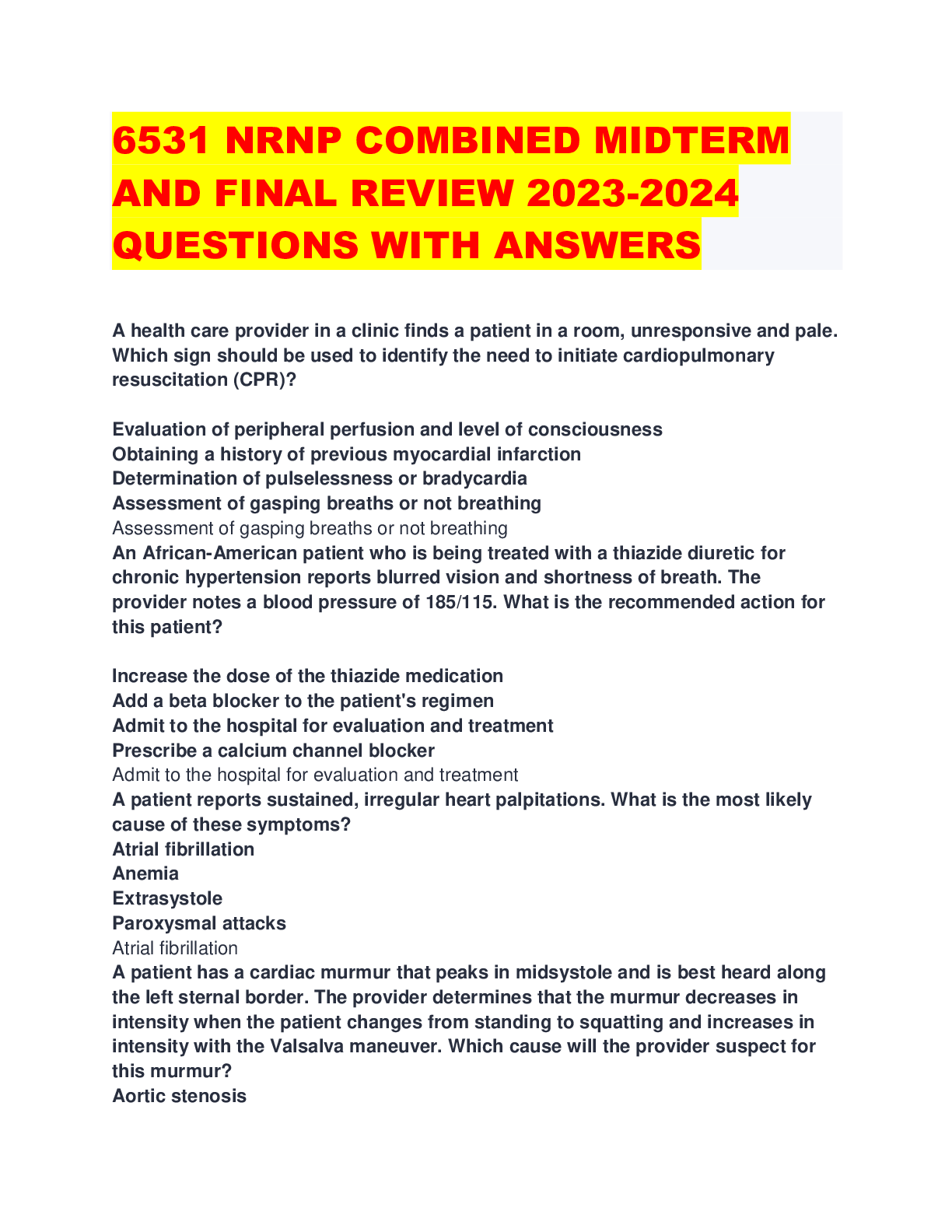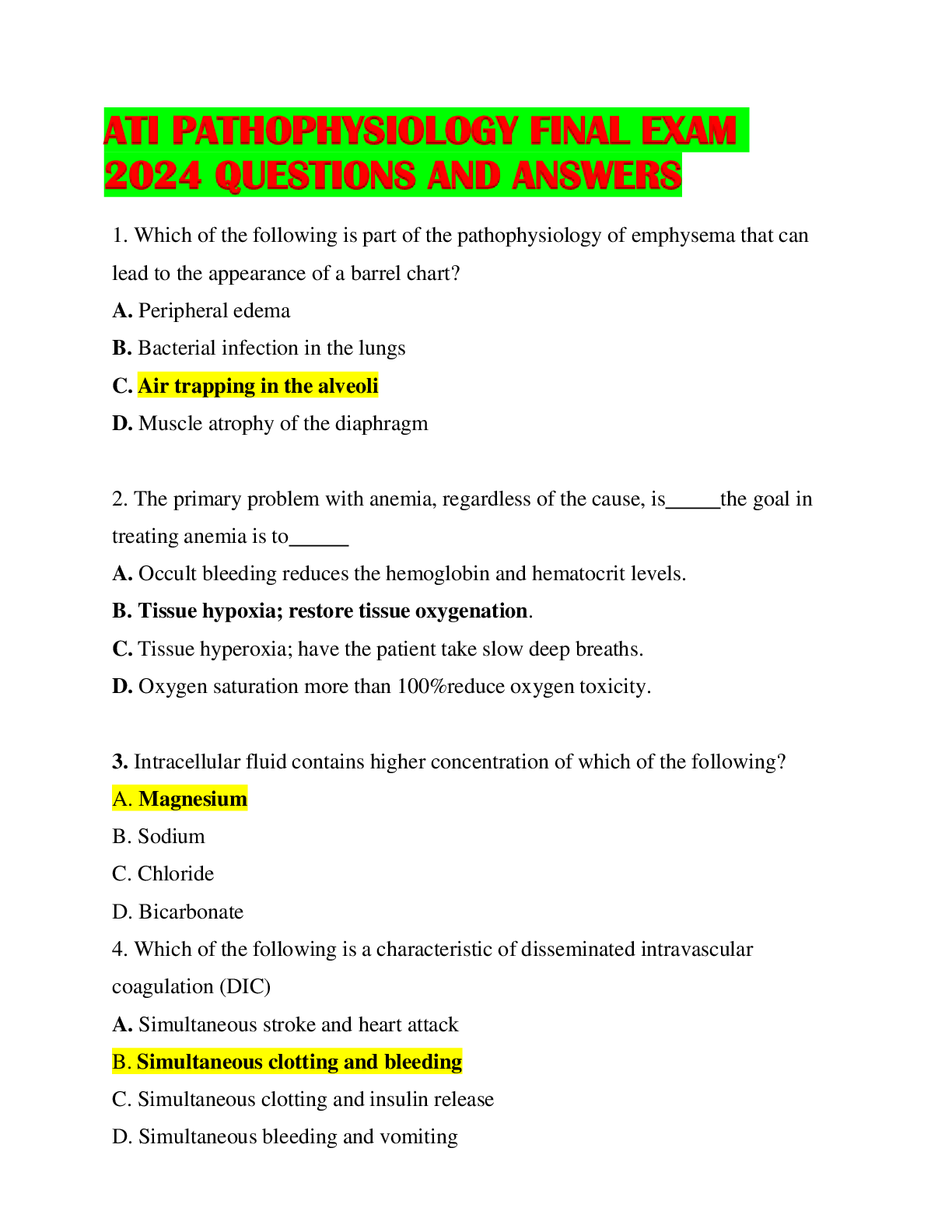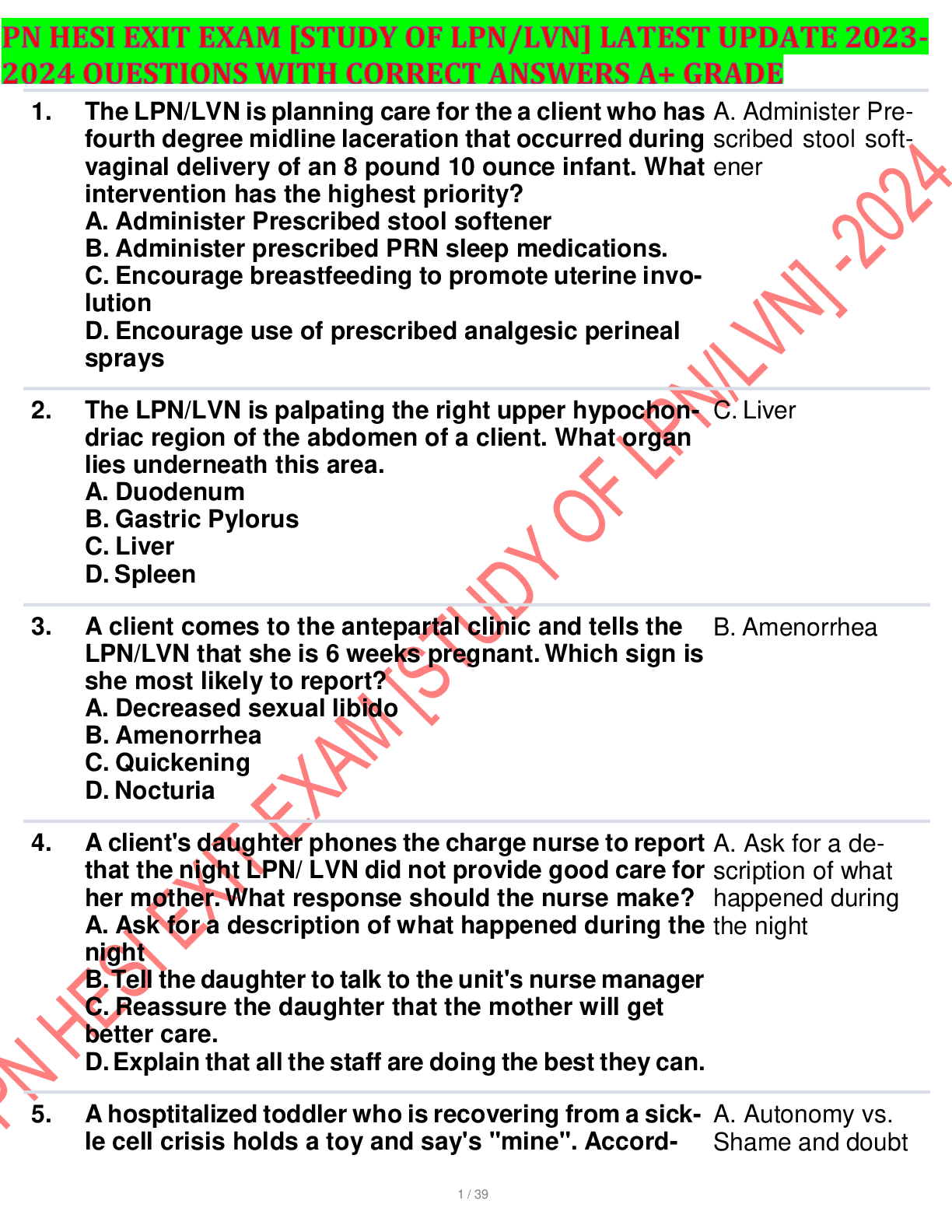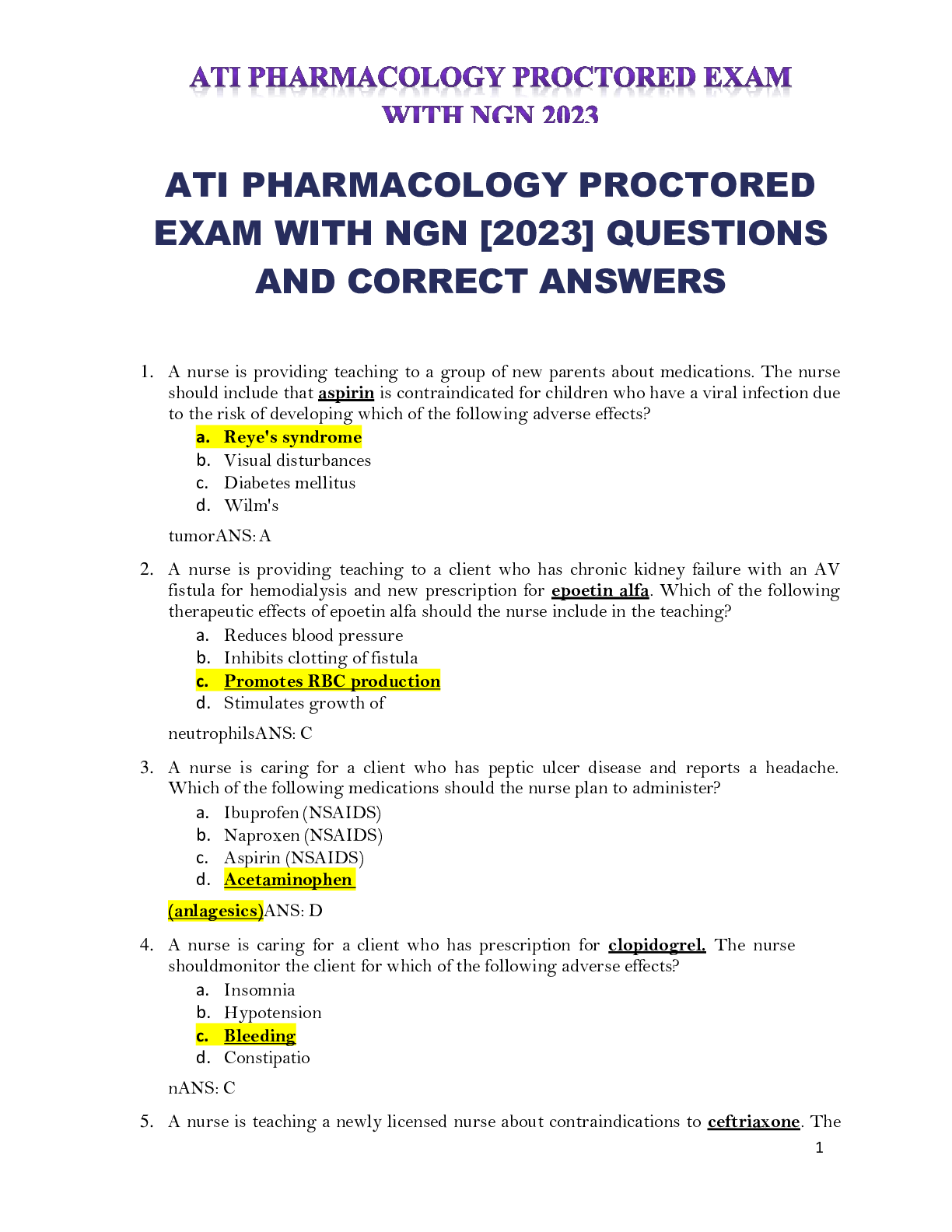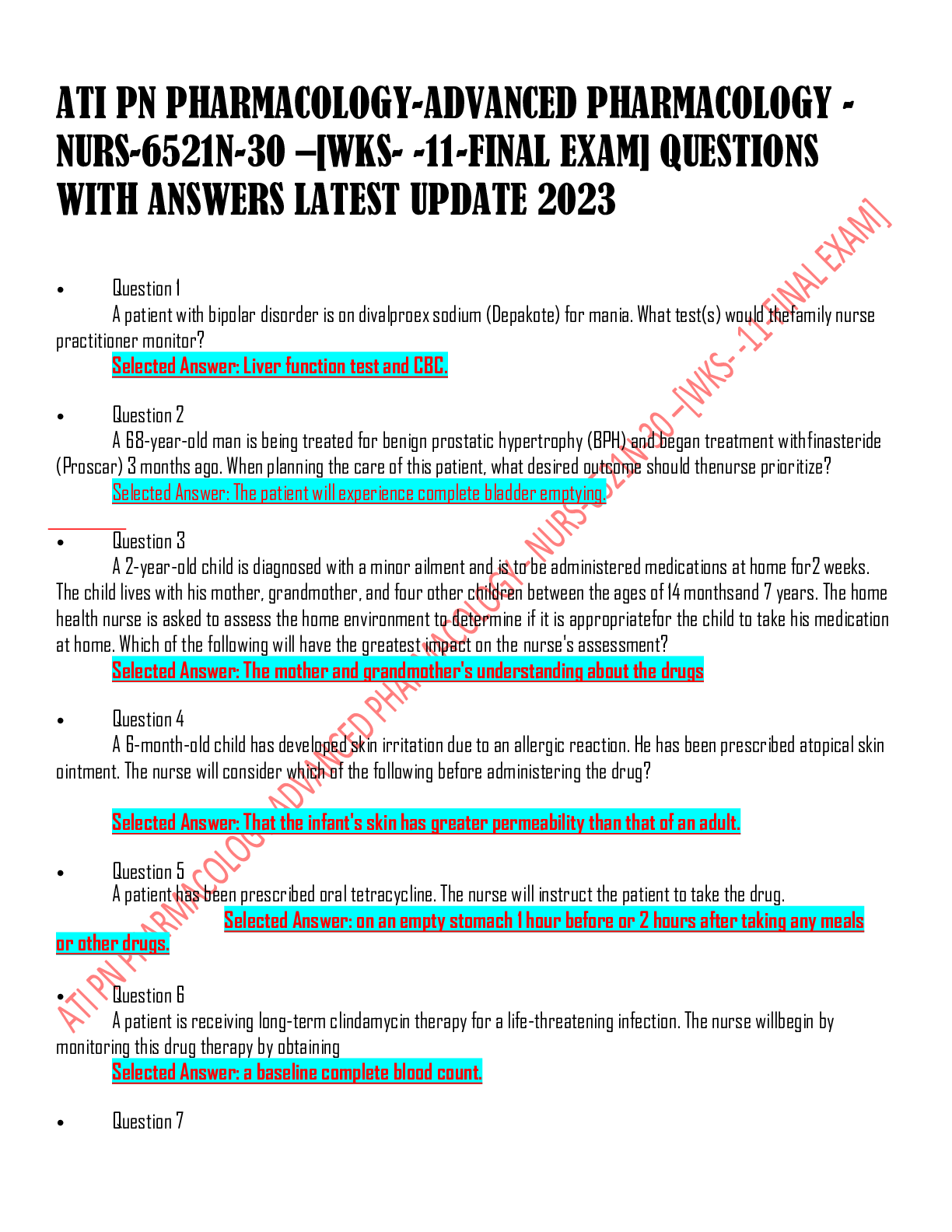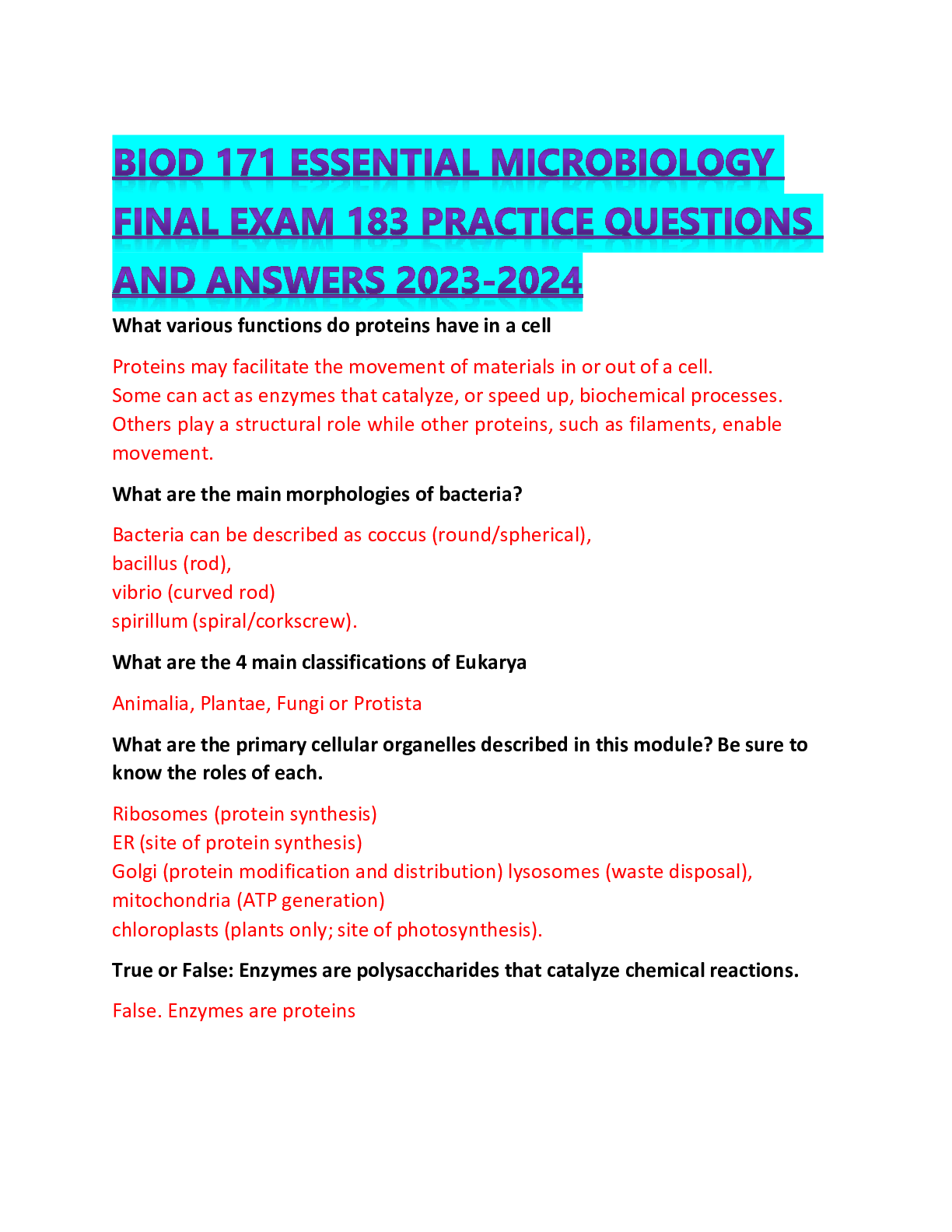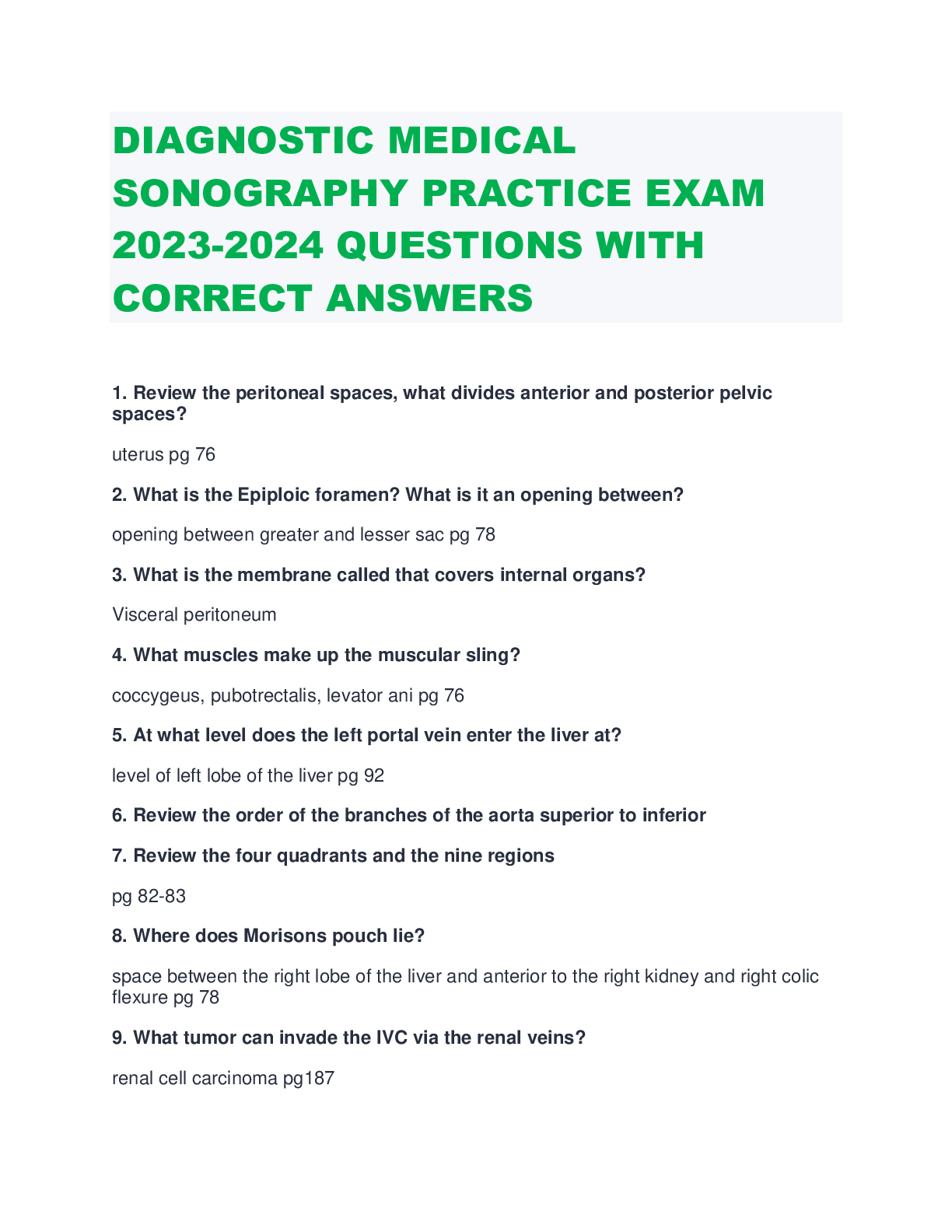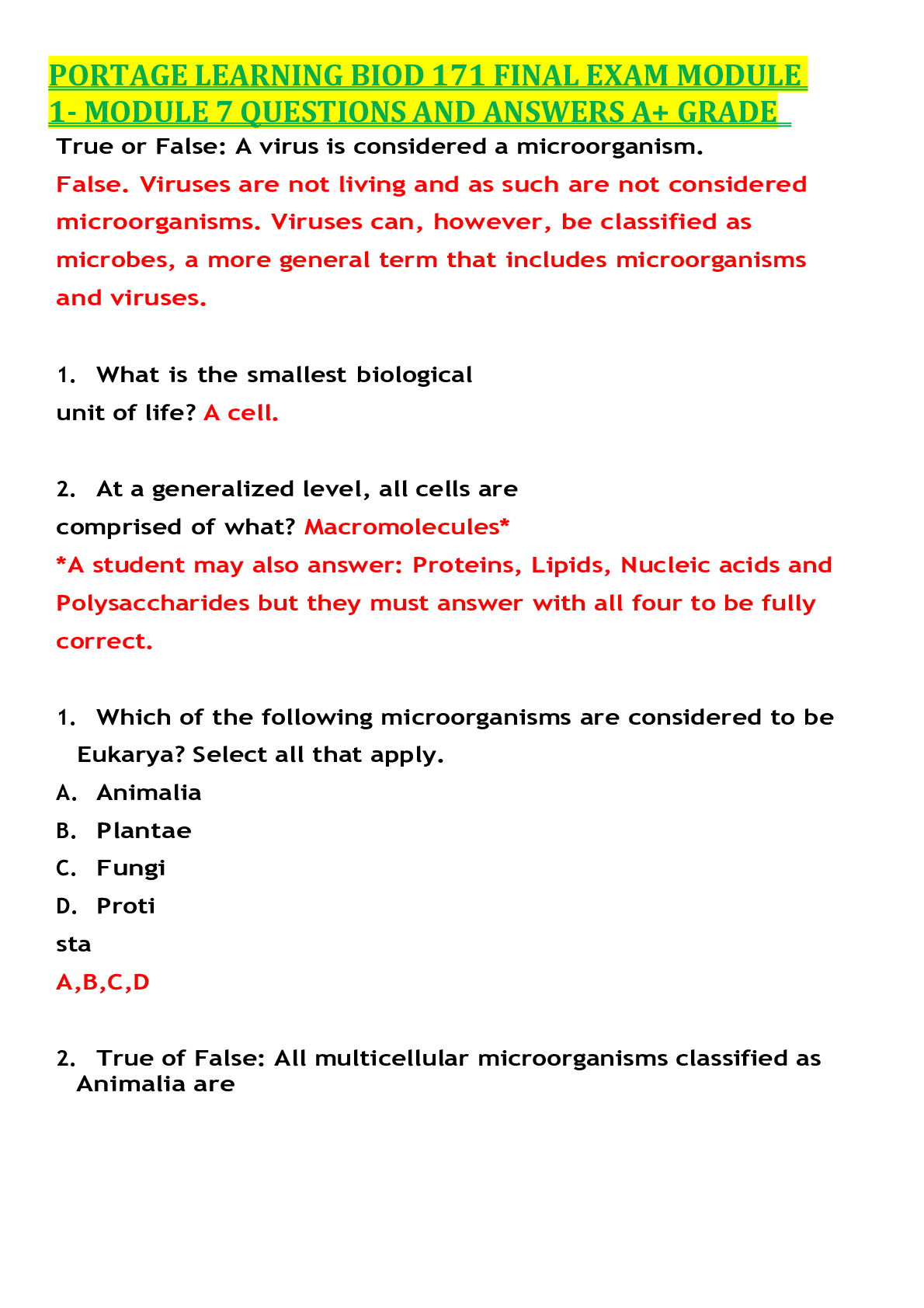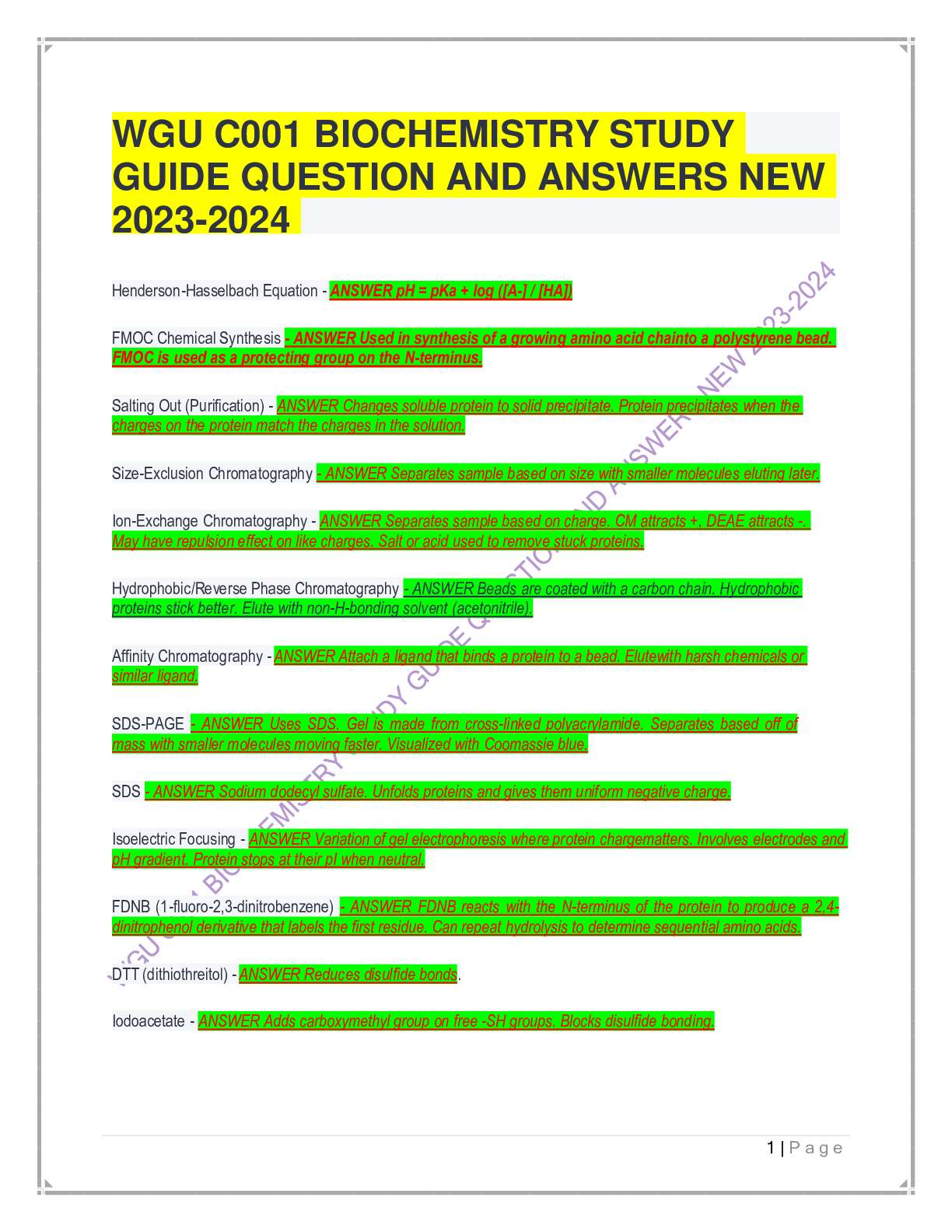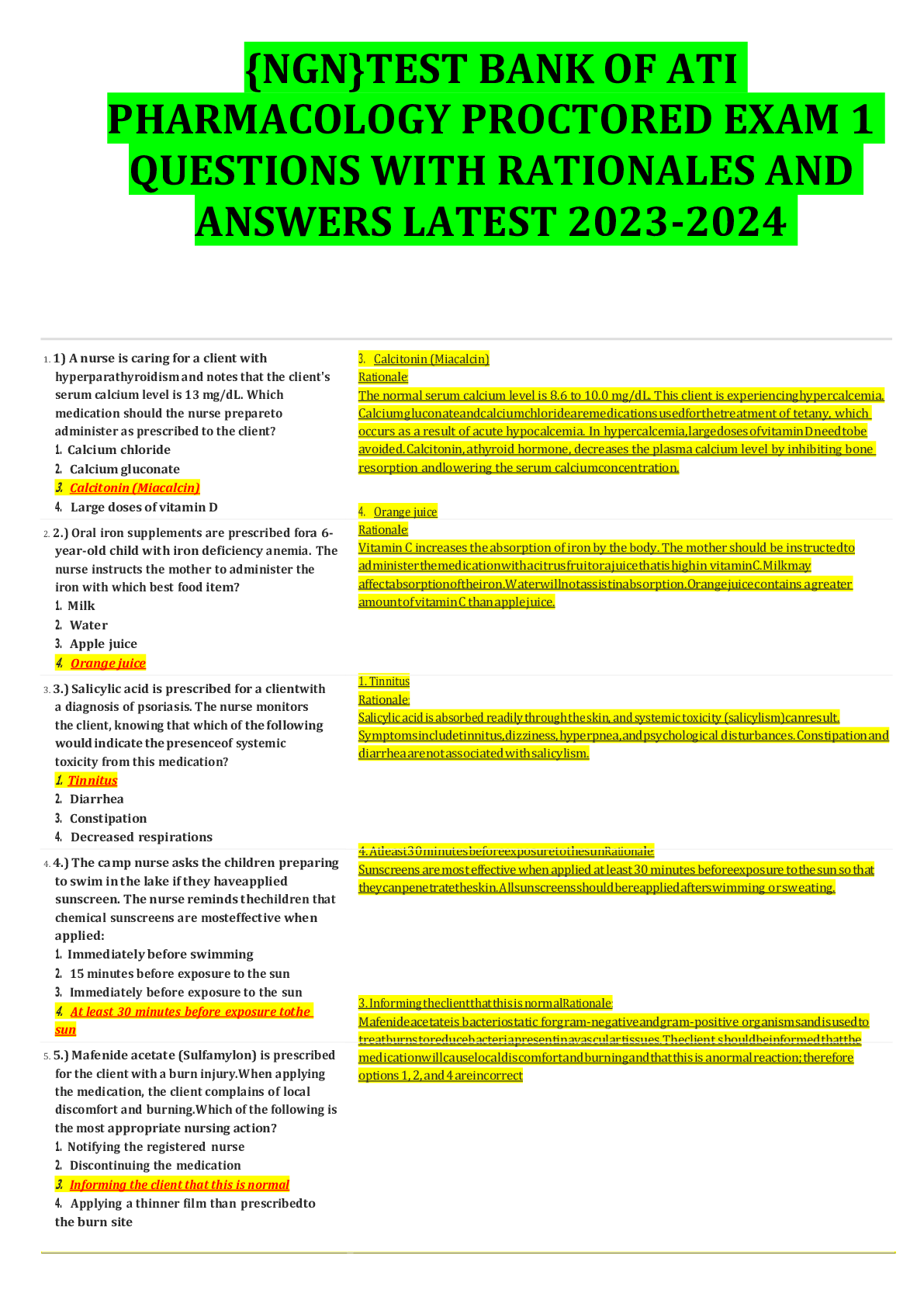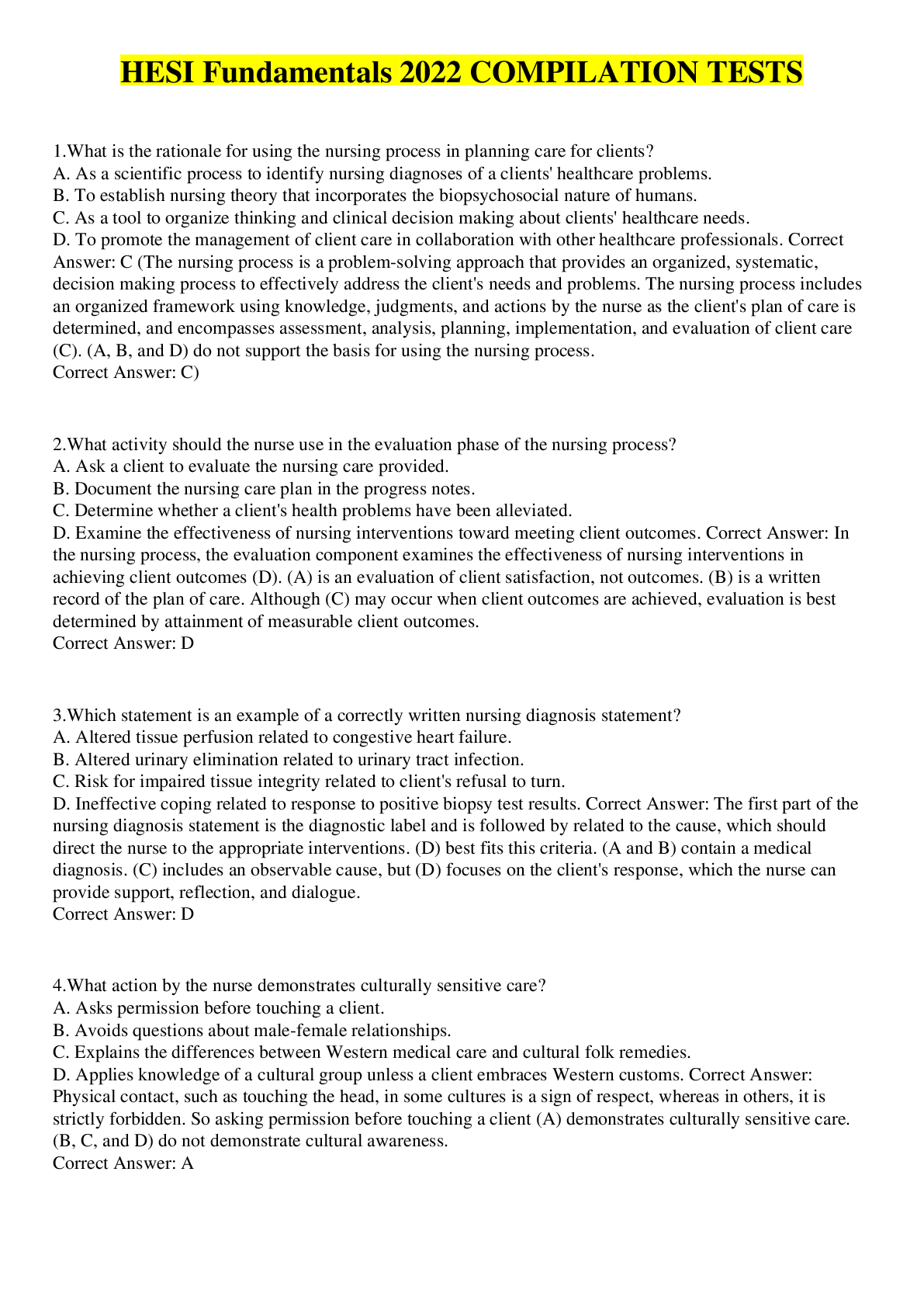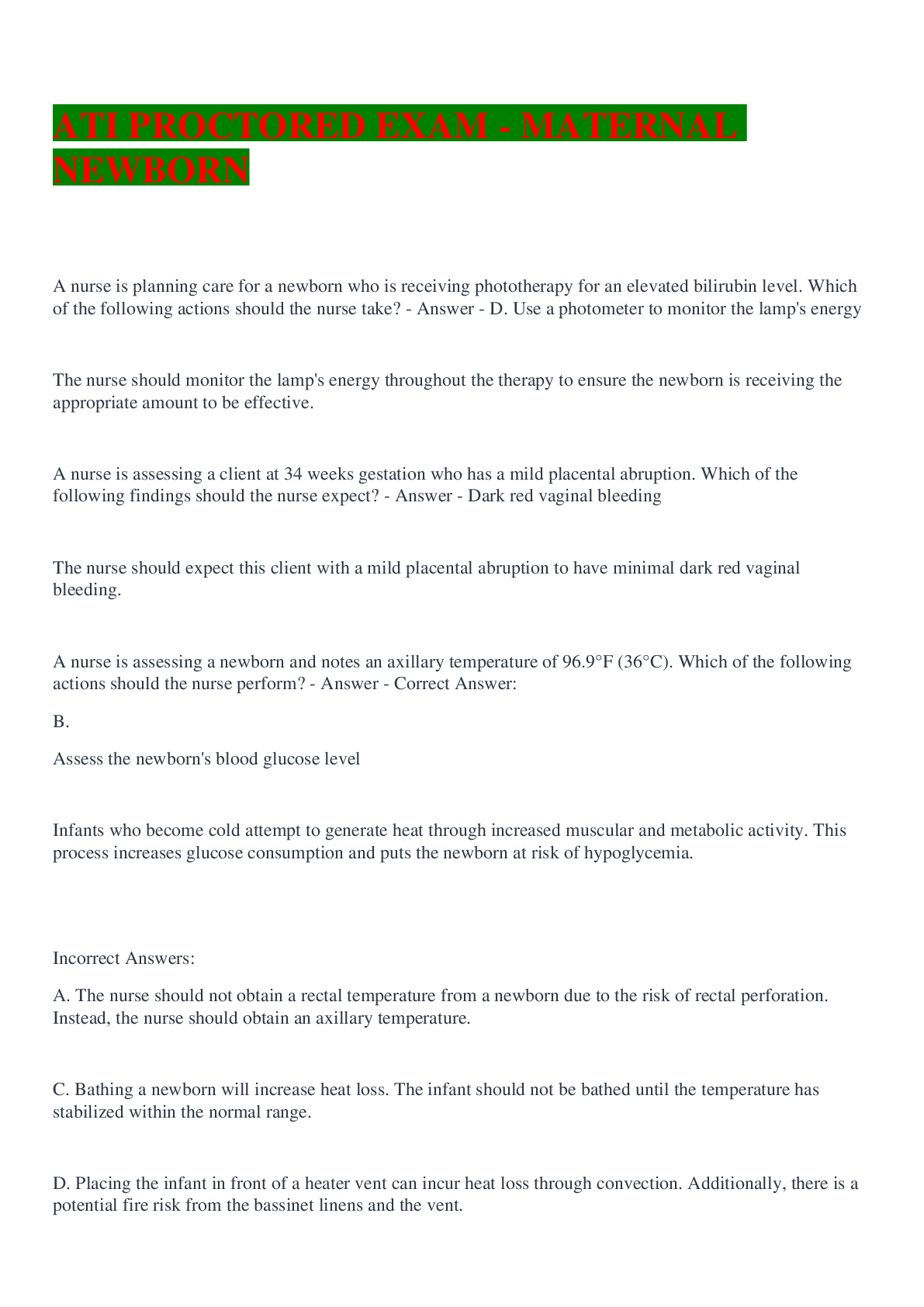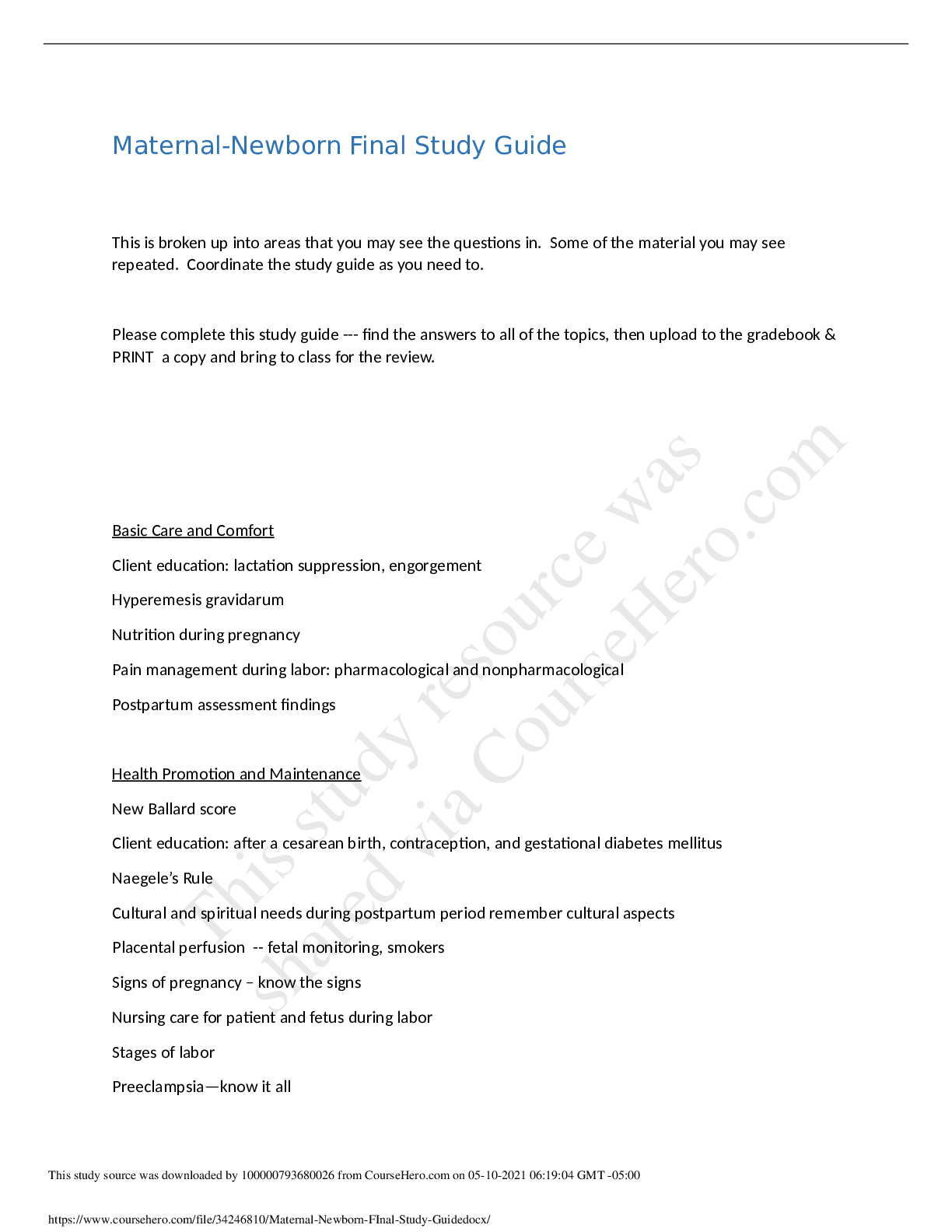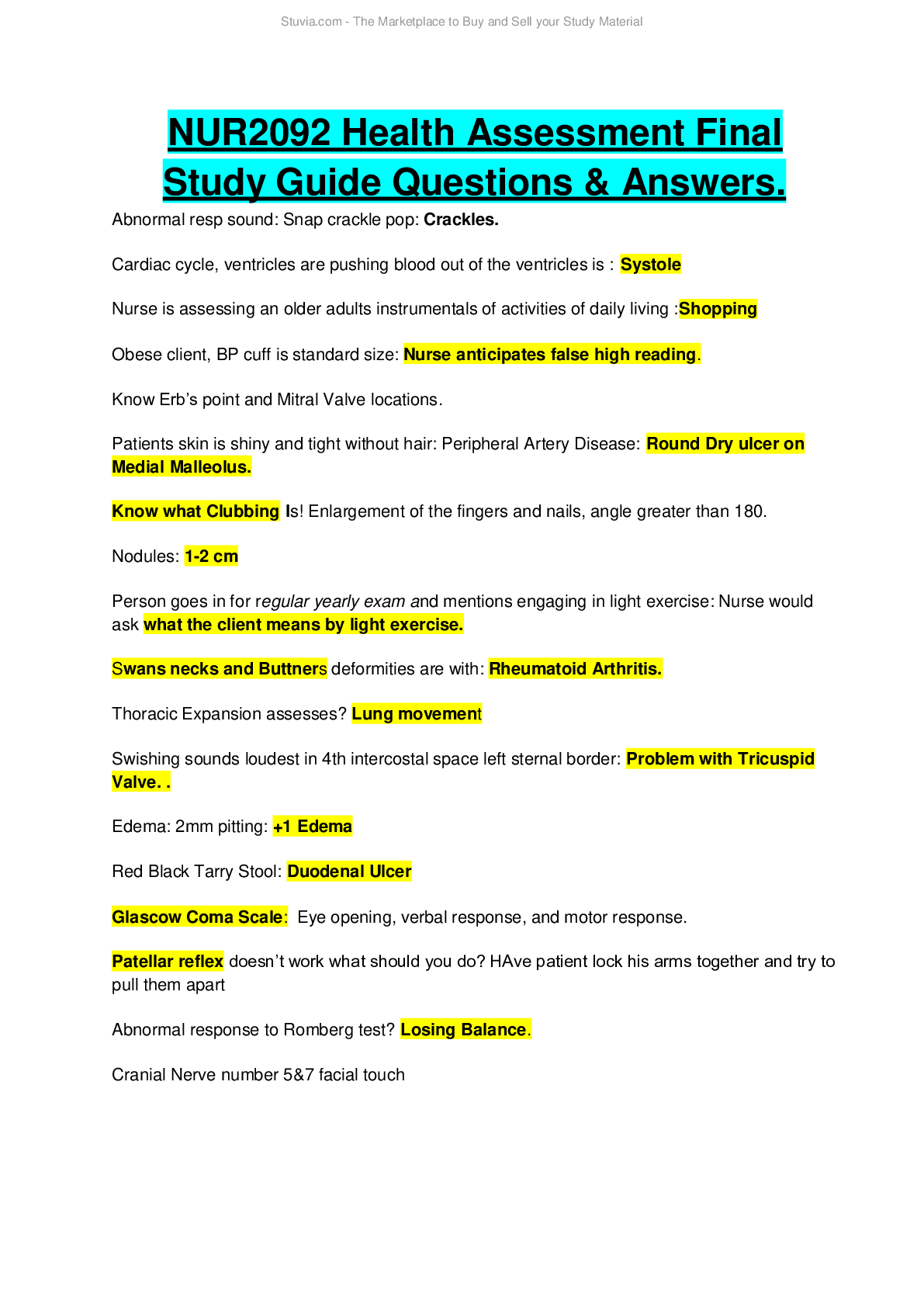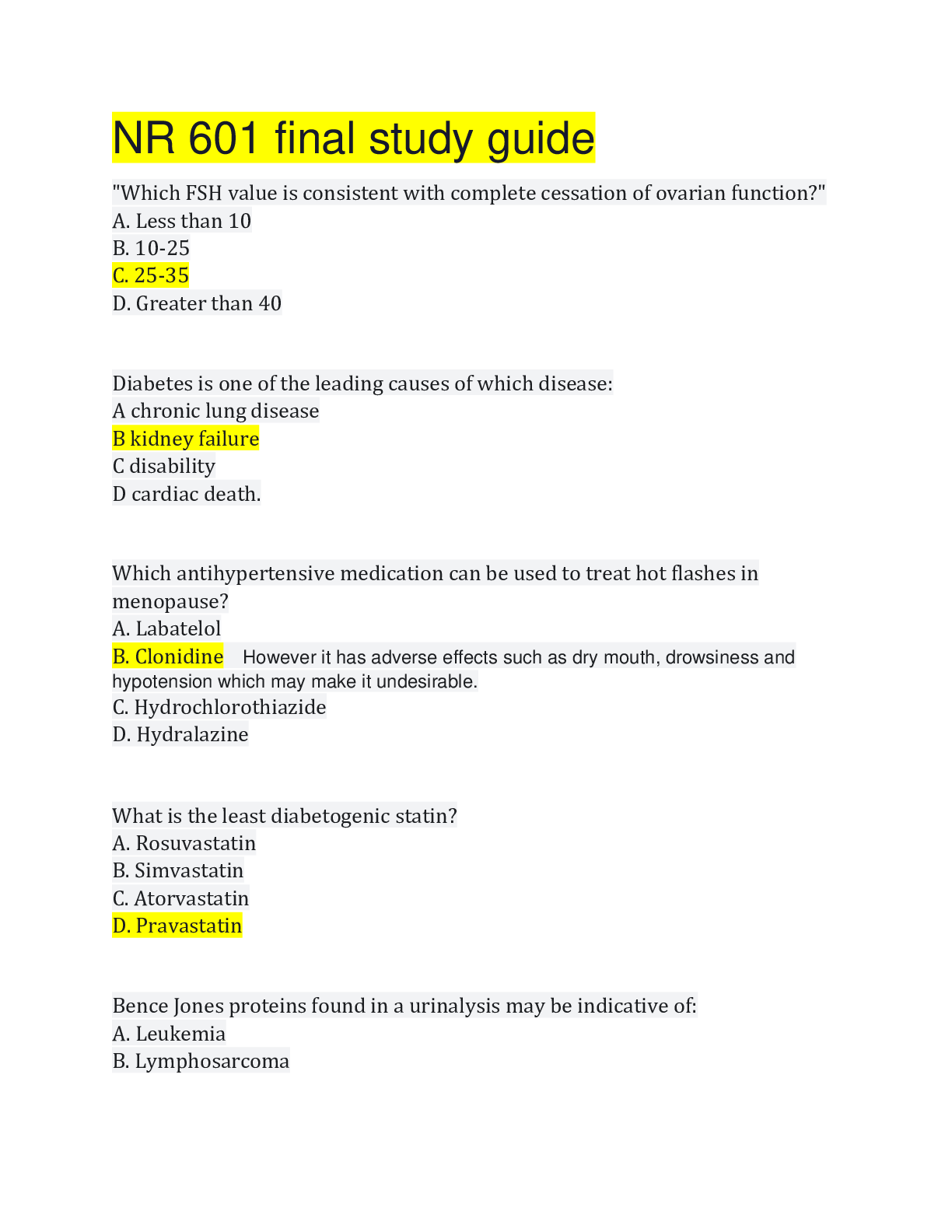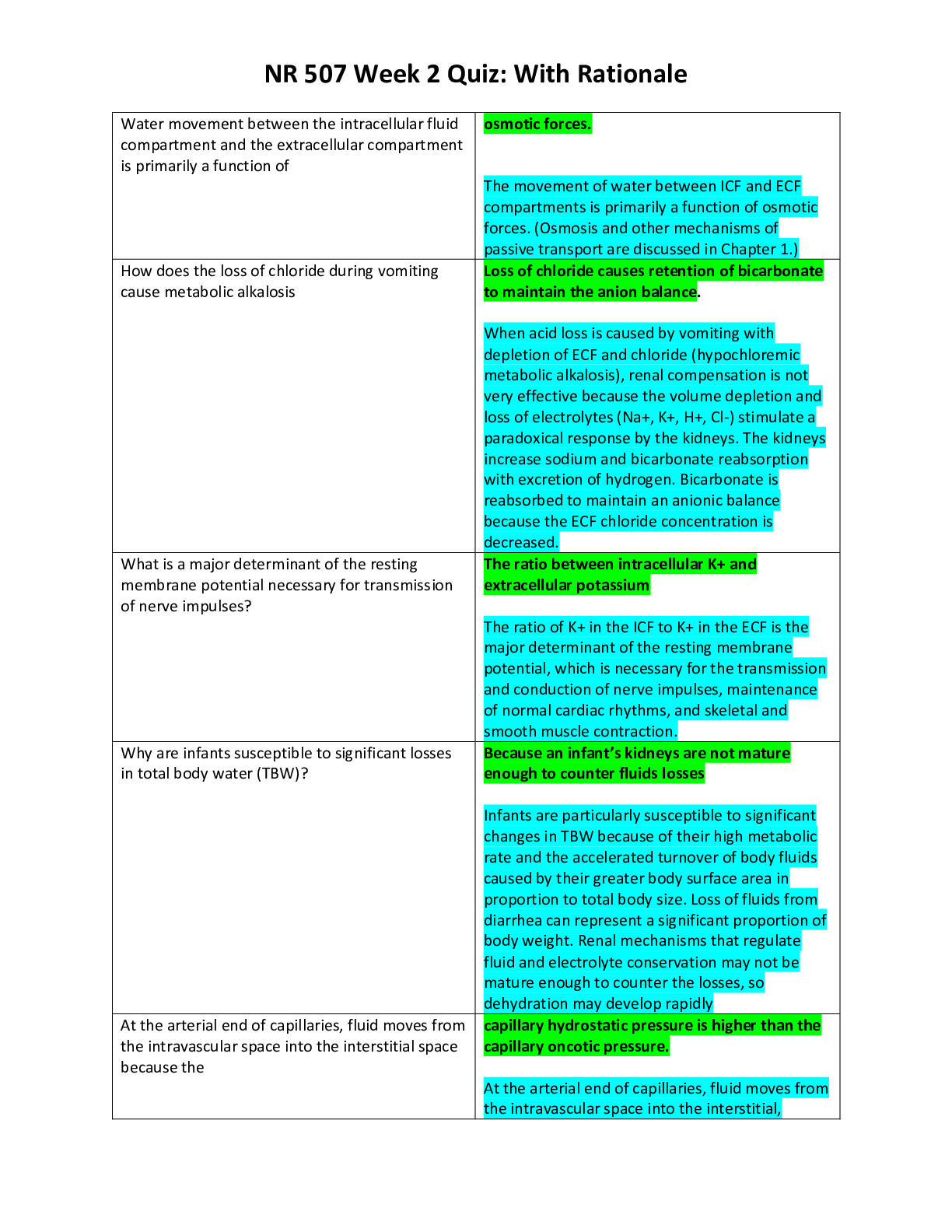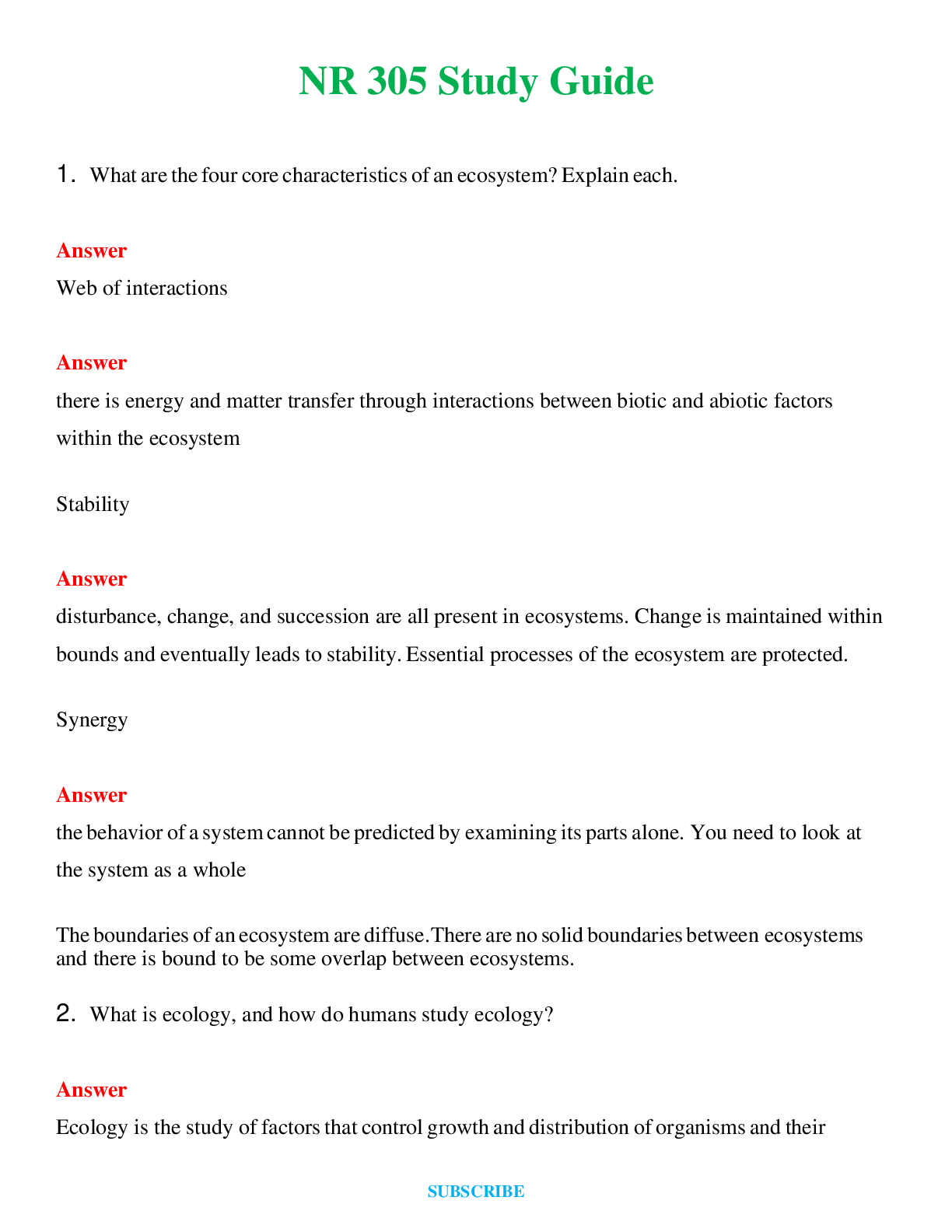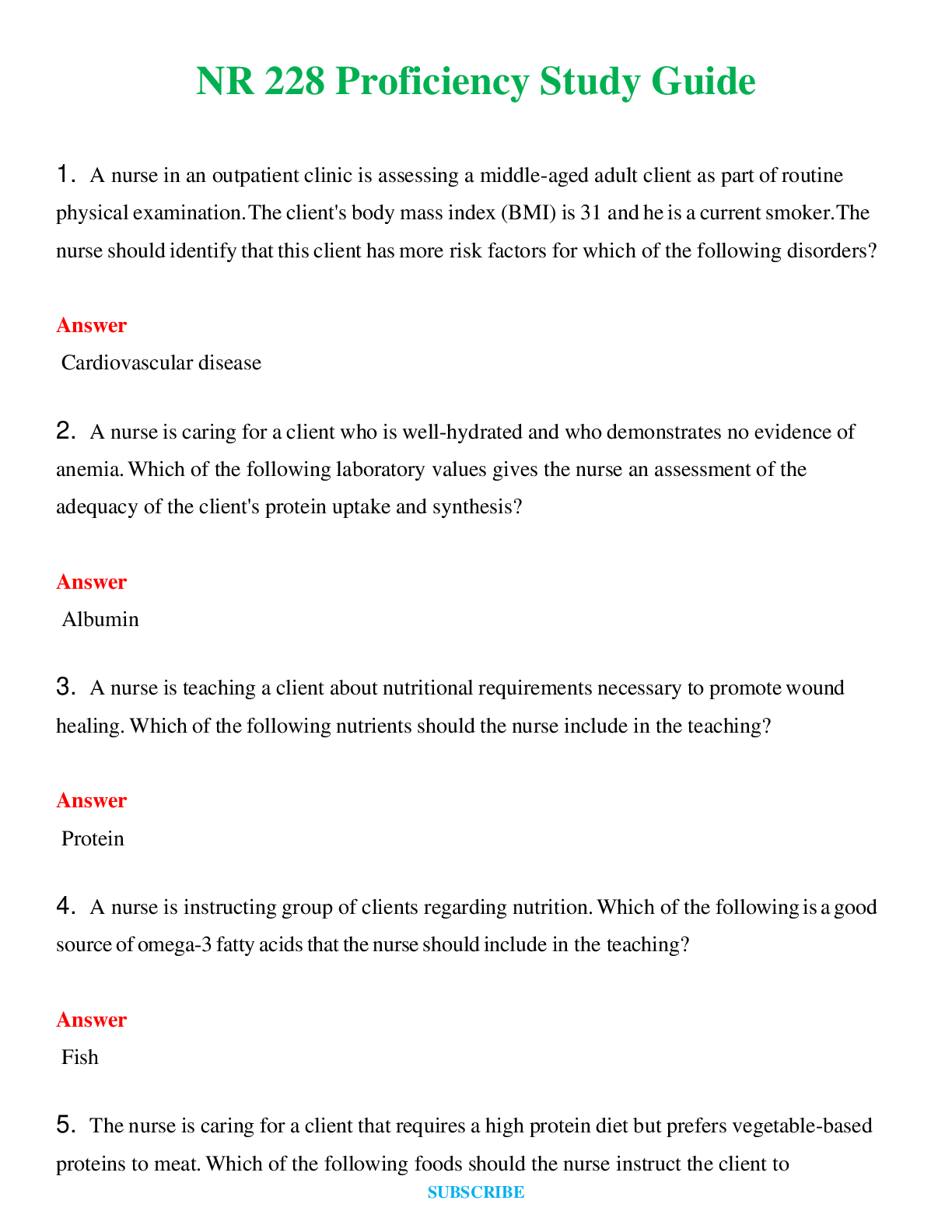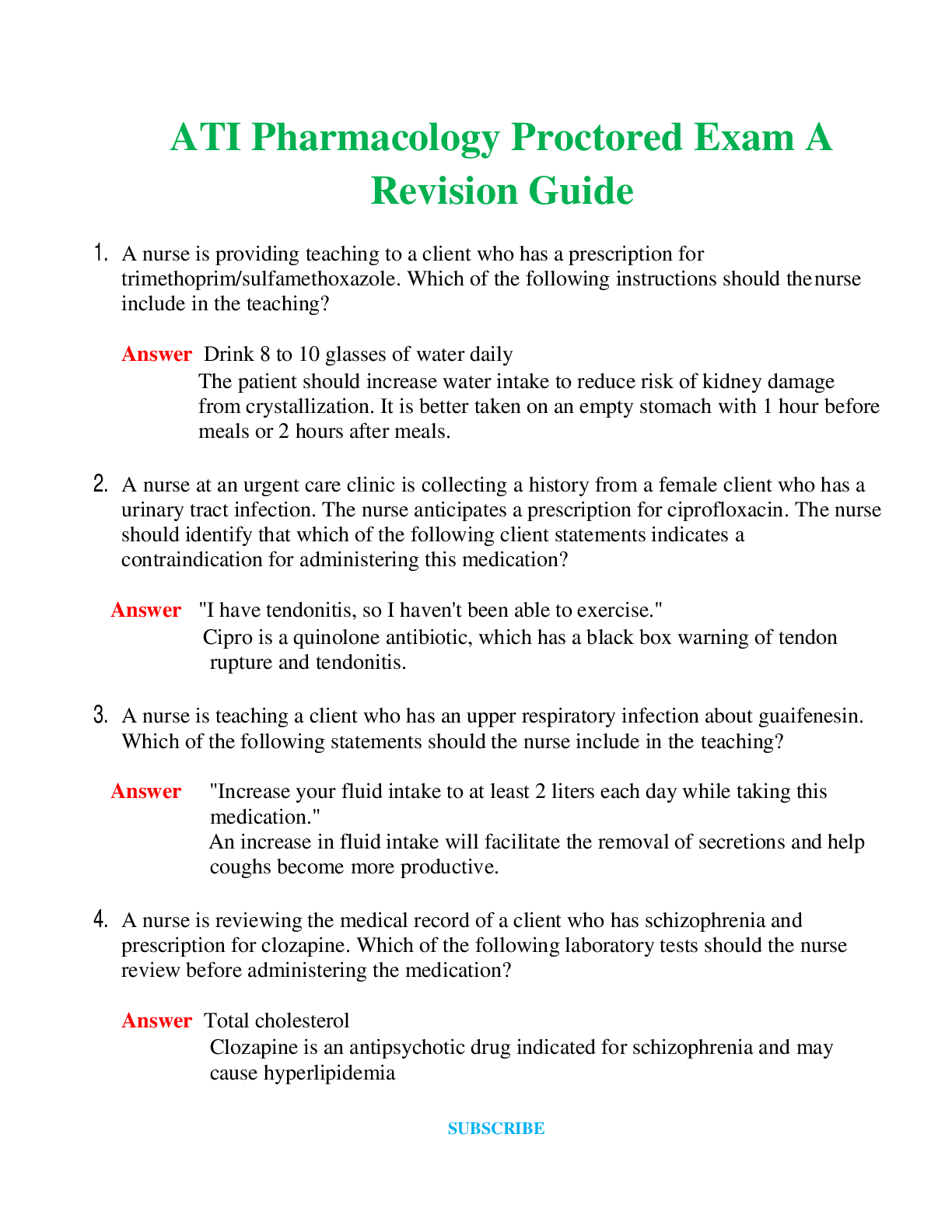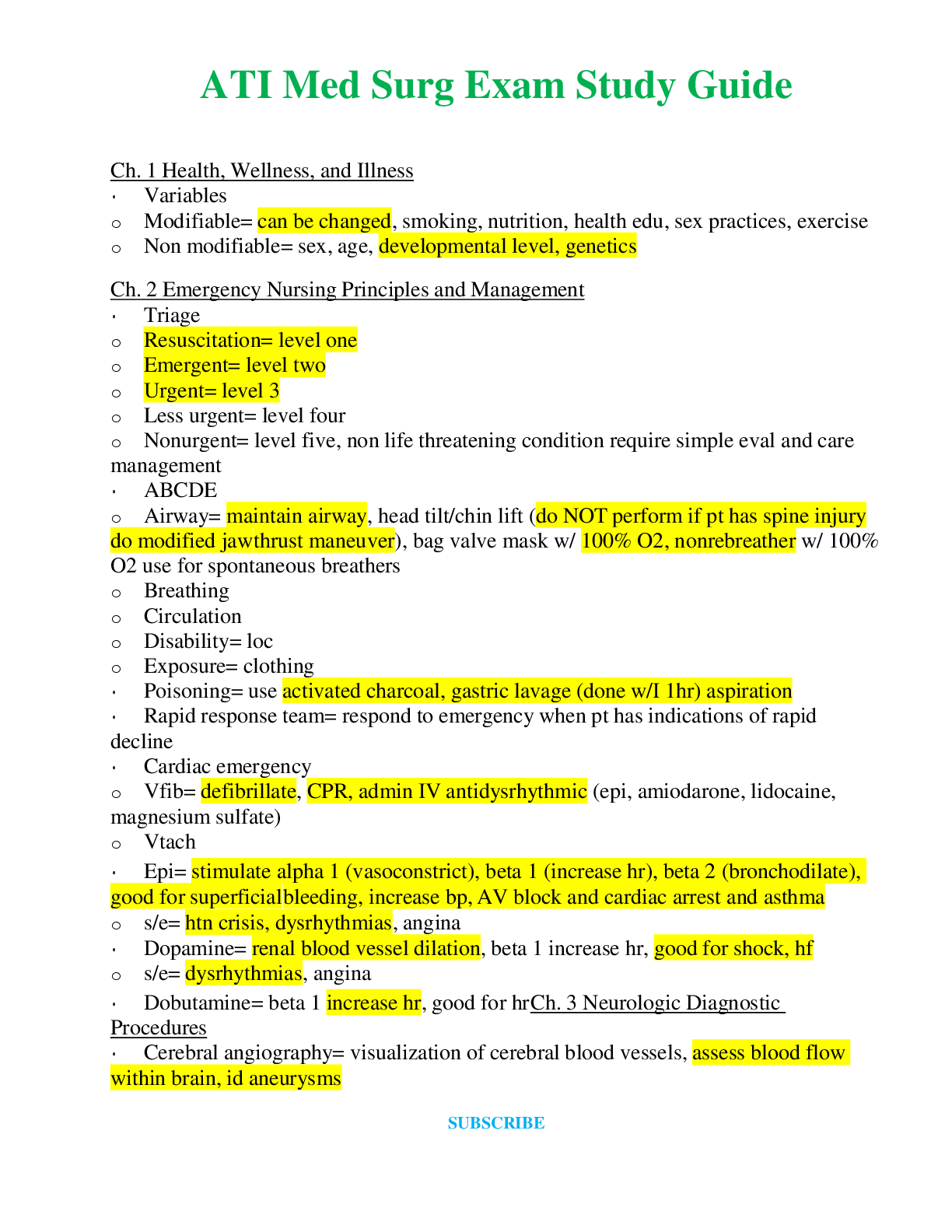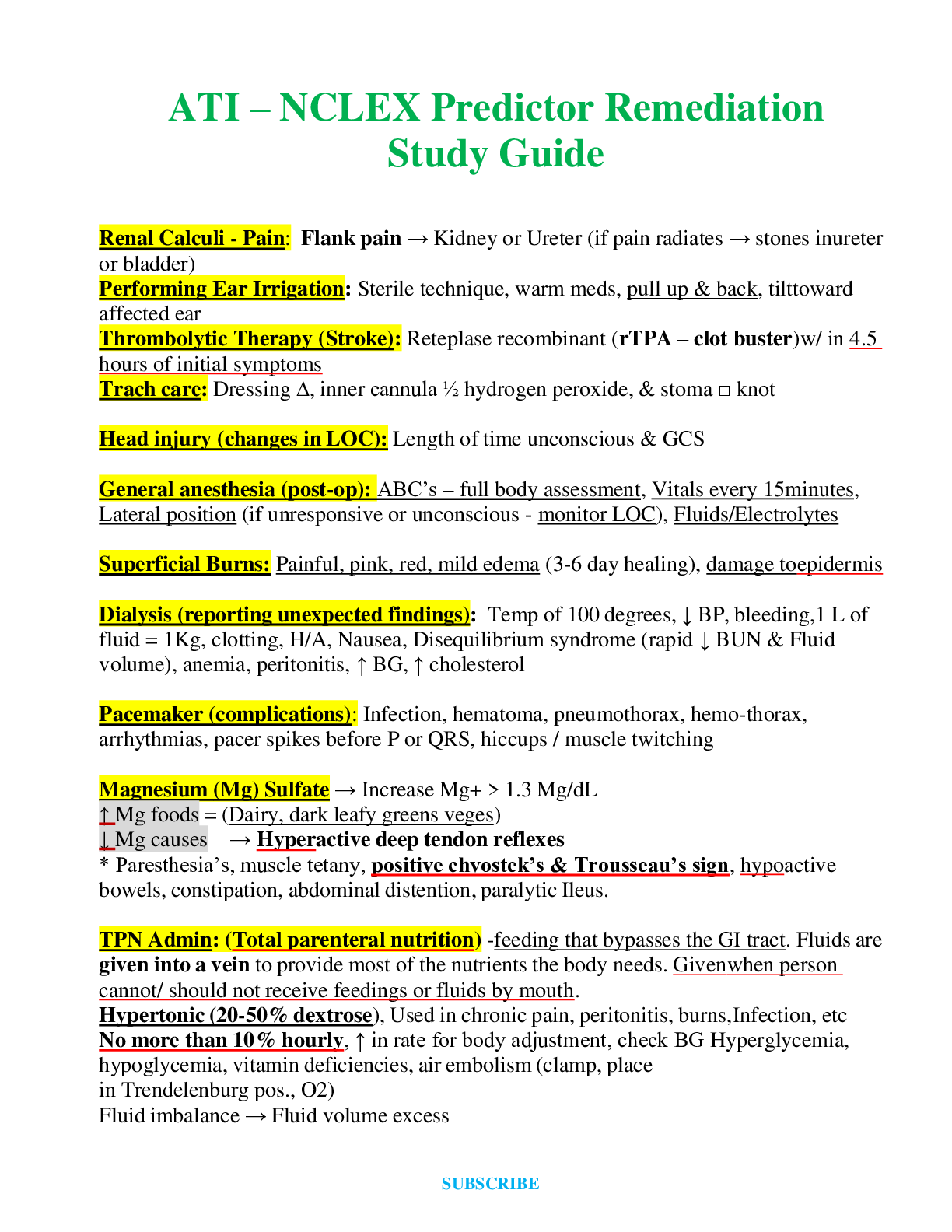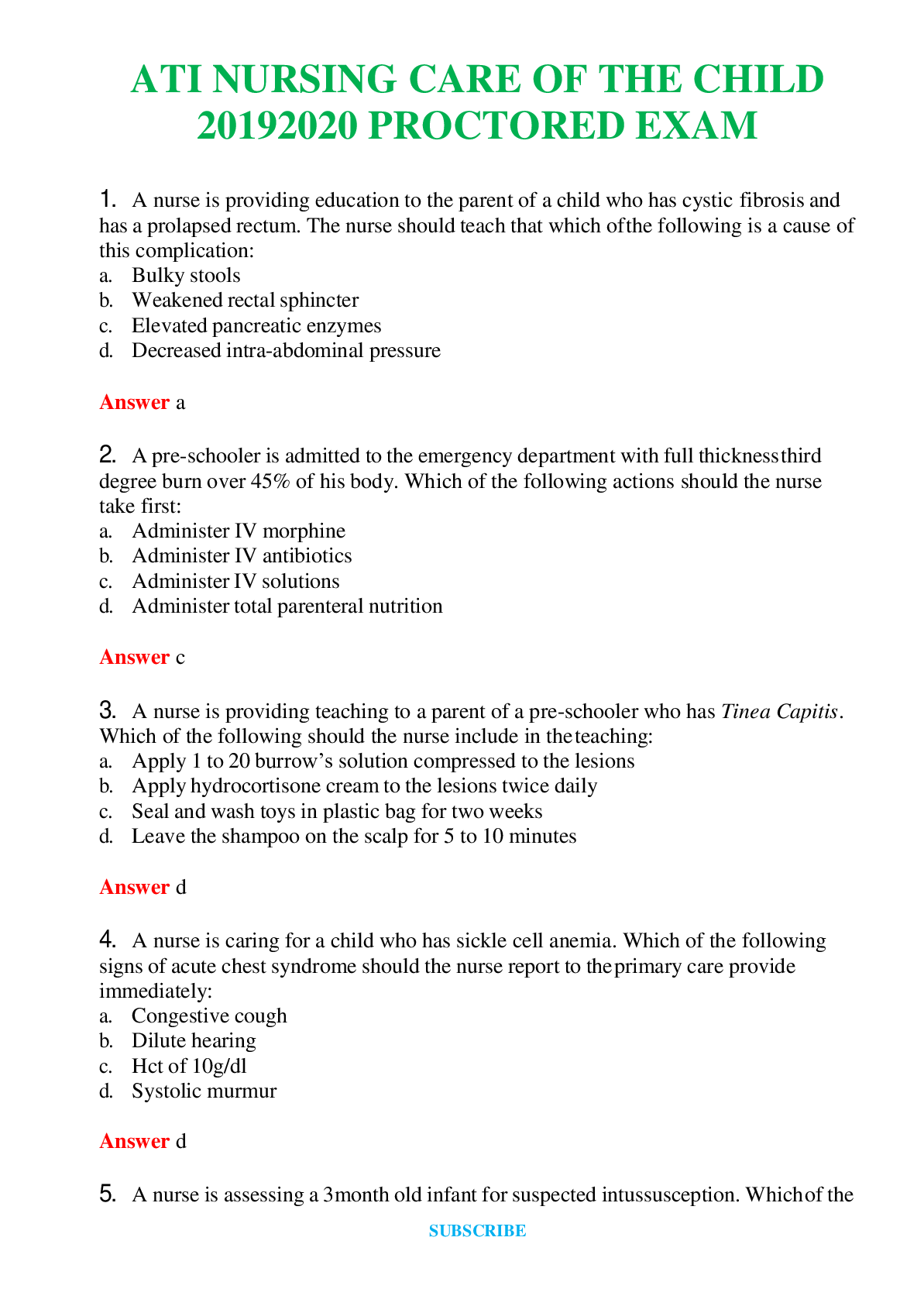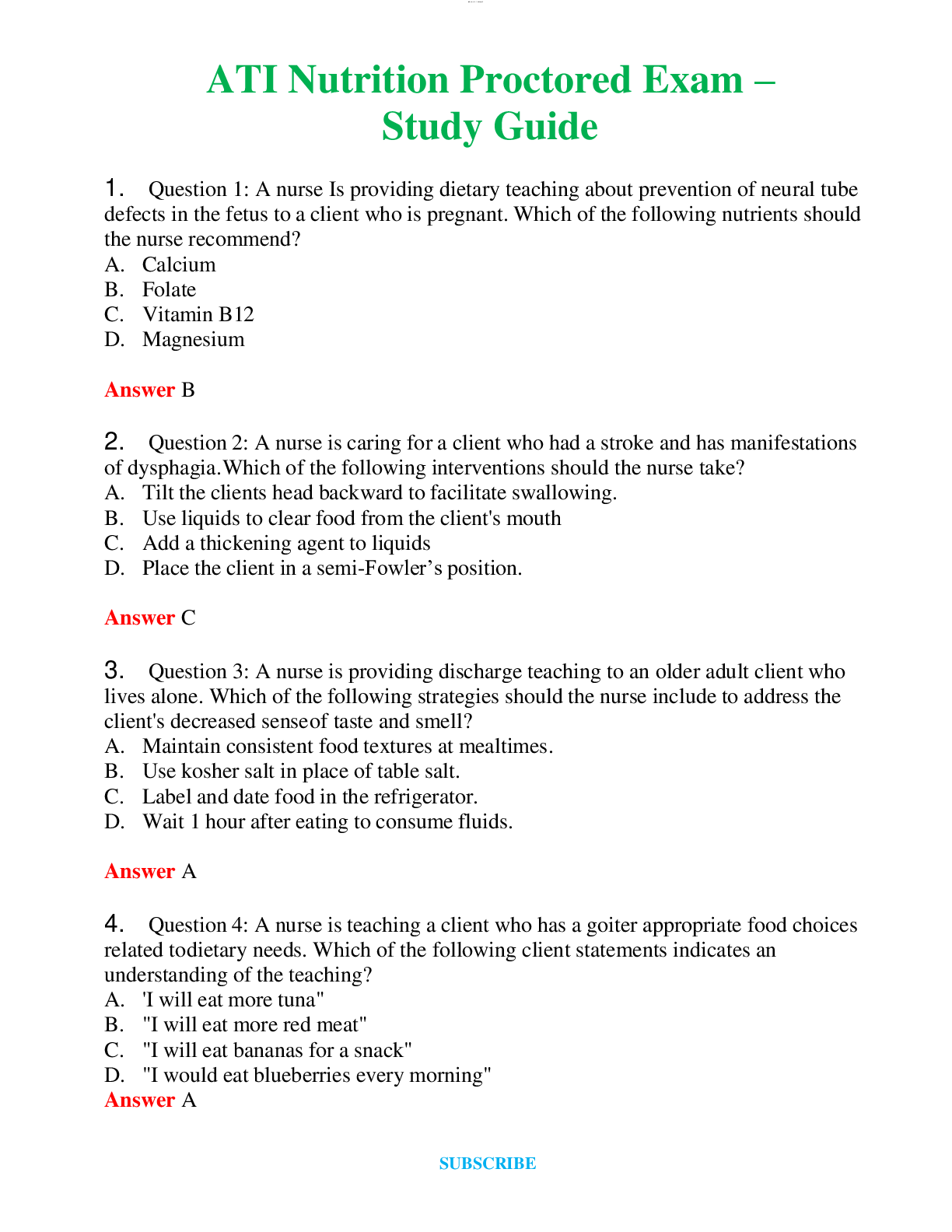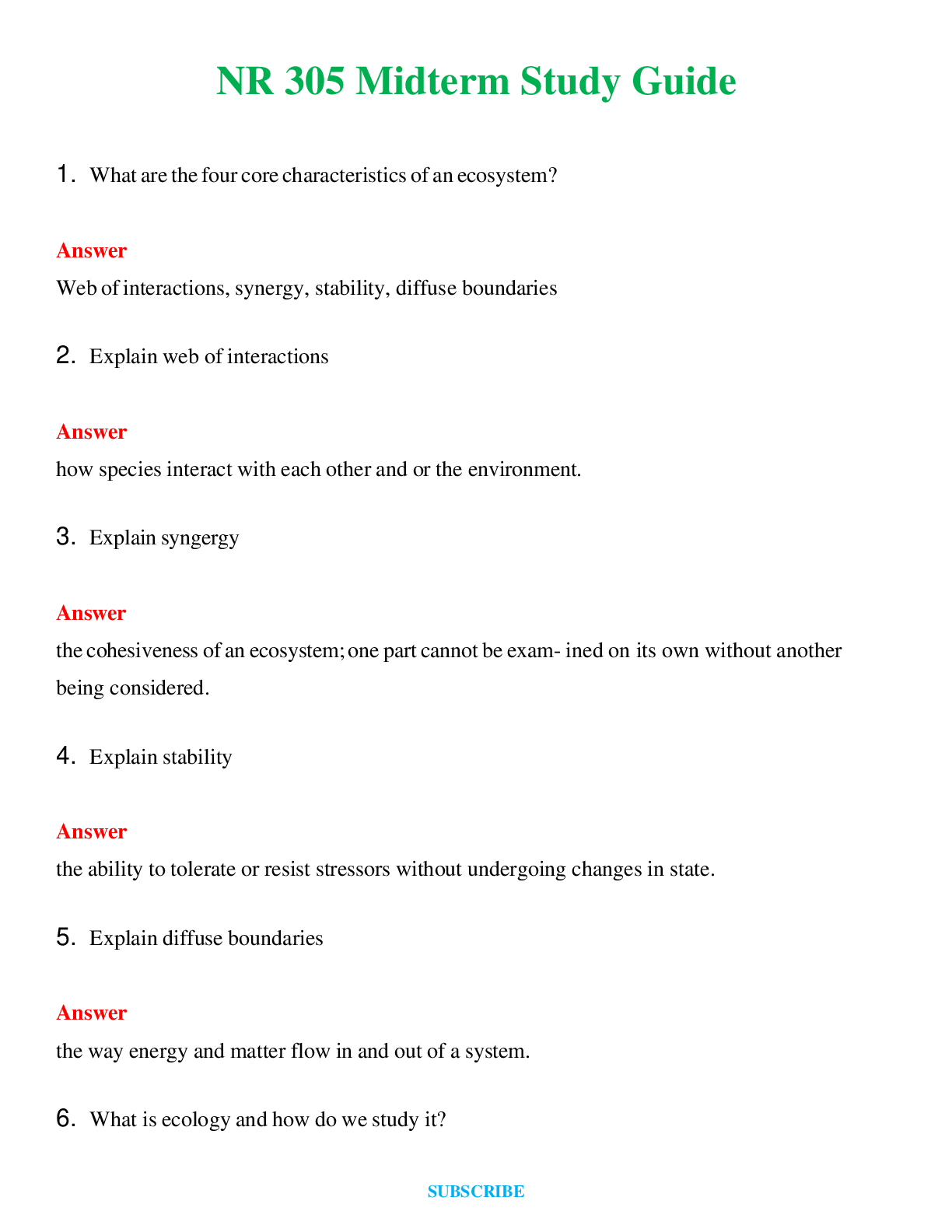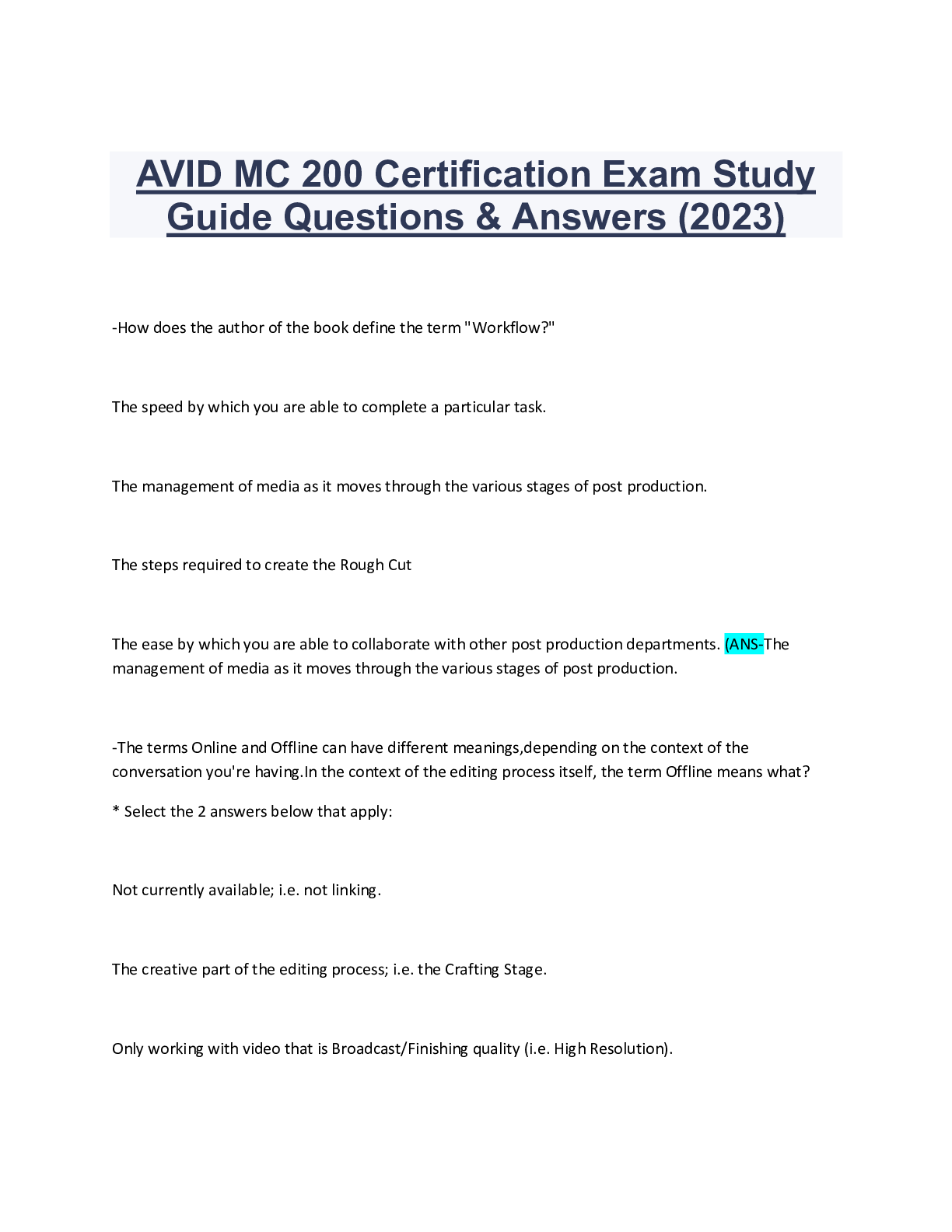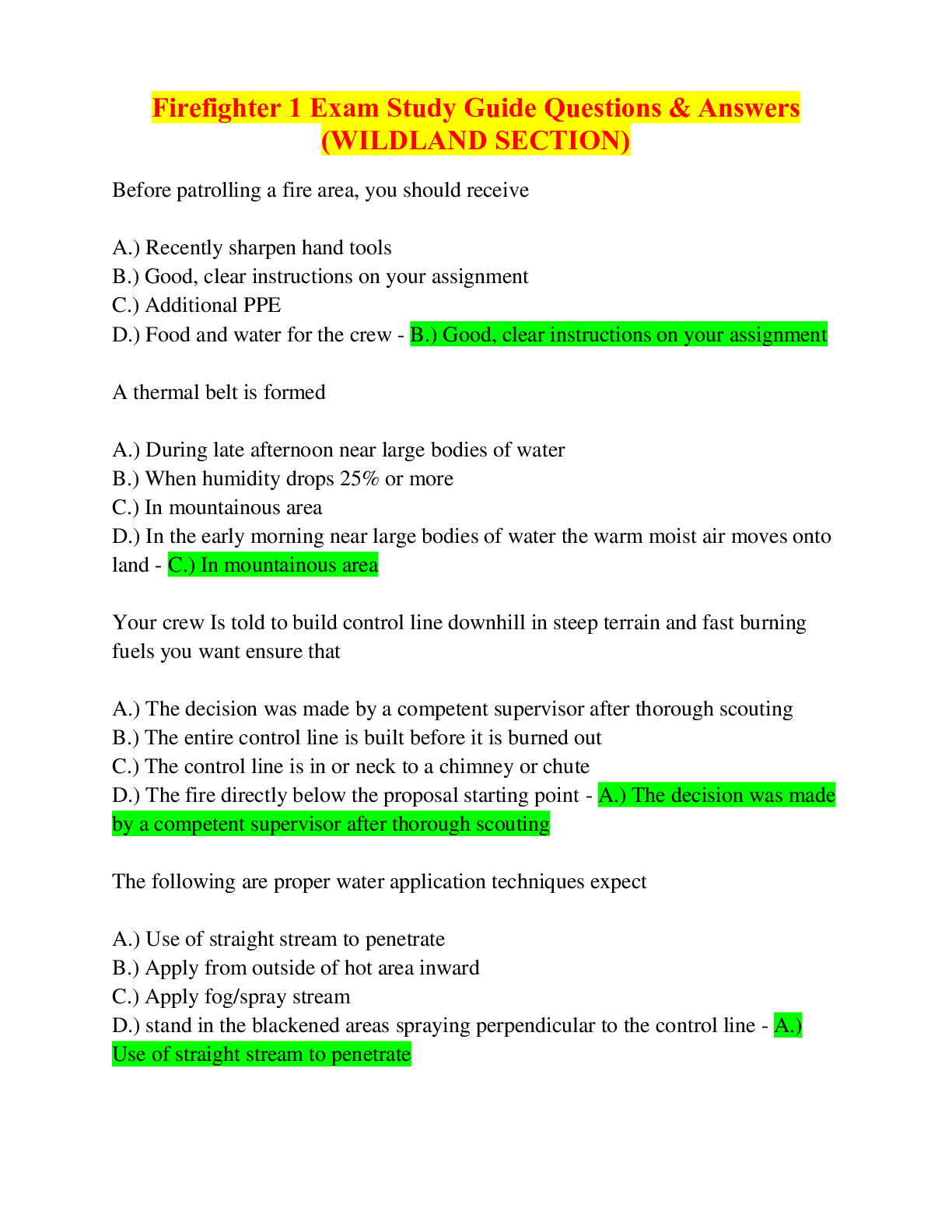Health Care > EXAM > ADVANCED PATHOPHYSIOLOGY UTMB 5355 EXAM 3 MODULES 5 & 6 STUDY GUIDE QUESTIONS & ANSWERS (All)
ADVANCED PATHOPHYSIOLOGY UTMB 5355 EXAM 3 MODULES 5 & 6 STUDY GUIDE QUESTIONS & ANSWERS
Document Content and Description Below
ADVANCED PATHOPHYSIOLOGY UTMB 5355 EXAM 3 MODULES 5 & 6 STUDY GUIDE QUESTIONS & ANSWERS Biogenic Amine Theory linked to depression - Deficiency of neurotransmitters in brain of norepinephri... ne, dopamine, and/or serotonin. Particularly, a decrease in receptor binding with serotonin. Neurotransmitter Receptor Hypothesis linked to depression - A deficiency of monoamine neurotransmitters at neuronal synapses. Antidepressants increase - Neuronal synaptic levels of monoamine neurotransmitters. if you have more receptors than neurotransmitters - Neurotransmitters do not have time to re-charge thus, they do not function properly. Hypothalamic-Pituitary-Adrenal (HPA) System Dysregulation - HPA system dysregulation with excessive glucocorticoid secretion is found in a large percentage of people suffering from major depression. Patho of Alzheimer's includes - plaque formation, presence of --, with decreased levels of - - Amyloid B, neurofibrillary tangles, acetylcholine these disrupt impulse transmission neurofibrillary tangles - are a deformation of the structure that carries nutrients to neurons of the brain. Decreased levels of choline acetyl transferase and acetylcholine is associated with - Memory loss Most common cause of dementia - Alzheimer's disease fatal 5-10 years Characteristics of Alzheimer's - Loss of memory, language , inability to learn new things, dysfunction, delusions, cannot perform ADLs, majorly effects social life Parkinson's Disease is - Chronic motor progressive neuro-degenerative known as a shaking palsy Parkinson's disease is associated with - basal ganglia dysfunction and atrophy of neurons in the substantia nigra that produce dopamine; Characteristics of Parkinson's disease - Tremors at rest, rigidity, bradykinesia, muscular rigidity and postural abnormalities. 2 Main Categories of CVA - Hemorrhagic and Ischemic Hemorrhagic CVA - Blood produces inflammatory reaction, swelling, displaces brain tissue and increases ICP 2 types of hemorrhagic stroke - Intracerebral and subarachnoid Intracerebral Hemorrhage - Blood vessel leaks directly into brain tissue Subarachnoid hemorrhage - Bleeding into the subarachnoid space, caused by trauma, aneurysm rupture presents as "worst headache of life". surgical emergency Ischemic CVA - reduction in cerebral blood flow results in hypoxia and irreversible cell death with associated cerebral edema 3 types of ischemic CVA - thrombotic, embolic, hypercoagulable states. Thrombotic - caused by atherosclerosis blocking vessels. obstruction of blood vessel due to localized occlusive process Embolic - caused by blood clot, fat or air embolus traveling from distant site to brain Hypercoaguable state - conditions such as sickle cell disease, polycythemia causing blood clot to form and obstruct vessel Multiple sclerosis - chronic, inflammatory autoimmune demyelinating disease of the CNS. : patho includes CNS demyelination thought to be caused by an immune reaction Acetylcholine - excitatory or inhibitory, enables muscle action, learning, memory- involved in memory impairment in Alzheimer's disease Norepinephrine - Helps control alertness and arousal. Under supply can depress mood. Serotonin - inhibitory, involved with mood, hunger, sleep, and arousal- insufficient linked to depression, involved in migraine headaches, Prozac and antidepressant drugs raise levels Dopamine - excitatory, influences movement, learning, emotions, pleasure, decreased levels associated with tremors in parkinson's and depression, excess linked to schizophrenia GABA - major inhibitory, undersupply linked to anxiety, seizures, tremors and insomnia Glutamate - A major excitatory neurotransmitter; involved in memory, oversupply can overstimulate brain producing migraines or seizures (MSG) PKU - is a rare, inherited disorder that causes increased the levels of phenylalanine in the blood due to a defect in the gene that helps create an enzyme, tyrosine Tyrosine is needed - to synthesize proteins, melanin and thyroxine, and break down phenylalanine Tyrosine is found in - all proteins, artificial sweeteners Failure to convert phenylalanine to tyrosine - can cause cognitive disabilities, seizures Myasthenia gravis patho - patho includes antibodies that attach to receptor sites and block the binding of acetylcholine causing atrophy of muscles and decrease use Attention defecit disorder - excessive frontal lobe activity resulting in frontal lobe dysfunction (hyperactivity) [Show More]
Last updated: 3 months ago
Preview 1 out of 15 pages
Instant download

Instant download
Reviews( 0 )
Document information
Connected school, study & course
About the document
Uploaded On
Feb 26, 2024
Number of pages
15
Written in
Additional information
This document has been written for:
Uploaded
Feb 26, 2024
Downloads
0
Views
11

